I'm trying to rotate an image, but it's getting slightly messed up when I'm rotating it, and it looks like it's not rotating it on center. So if I go around it looks like it's being truncated. Is there a better method to get the "center" of the image?
public void RotateImageLeft() {
try {
BufferedImage newImage = new BufferedImage(originalImage.getWidth(), originalImage.getHeight(), originalImage.getType());
AffineTransform tx = new AffineTransform();
tx.rotate(Math.toRadians(-90.0), originalImage.getWidth() / 2, originalImage.getHeight() / 2);
Graphics2D g2 = newImage.createGraphics();
g2.drawImage(originalImage, tx, null);
originalImage = newImage;
this.repaint();
g2.dispose();
} catch (Exception ex) {
ex.toString();
}
//g2d.drawImage(getResImage(), rescale, x, y);
}
For full code disclosure, here's more code. Here's my painComponent overridden method:
public void paintComponent(Graphics g) {
super.paintComponent(g);
resizeImage();
Graphics2D g2d = (Graphics2D) g;
g2d.drawImage(getResImage(), rescale, x, y);
}
Here's the resizeImage() method that gets called:
public void resizeImage() {
Graphics g = getResImage().getGraphics();
g.setColor(Color.WHITE);
g.fillRect(0, 0, getResImage().getWidth(), getResImage().getHeight());
int scaledWidth = (int) ((getOriginalImage().getWidth() * getHeight()
/ getOriginalImage().getHeight()));
if (scaledWidth < getWidth()) {
int leftOffset = getWidth() / 2 - scaledWidth / 2;
int rightOffset = getWidth() / 2 + scaledWidth / 2;
g.drawImage(getOriginalImage(),
leftOffset, 0, rightOffset, getHeight(),
0, 0, getOriginalImage().getWidth(), getOriginalImage().getHeight(),
null);
} else {
int scaledHeight = (getOriginalImage().getHeight() * getWidth())
/ getOriginalImage().getWidth();
int topOffset = getHeight() / 2 - scaledHeight / 2;
int bottomOffset = getHeight() / 2 + scaledHeight / 2;
g.drawImage(getOriginalImage(),
0, topOffset, getWidth(), bottomOffset,
0, 0, getOriginalImage().getWidth(), getOriginalImage().getHeight(),
null);
}
}
I'm using the ResizeImage method since I want any image to fit correctly on my 720/432 panel.
Here's some example pictures.
Pre-rotated

Post-rotated:

New code: (new image is the correct height/width of rotated image, still getting black bars. Screens below.
public void RotateImageLeft() {
try {
BufferedImage newImage = new BufferedImage( originalImage.getHeight(),originalImage.getWidth(), originalImage.getType());
AffineTransform tx = new AffineTransform();
tx.rotate(Math.toRadians(-90.0), newImage.getWidth() / 2, (newImage.getHeight() / 2));
Graphics2D g2 = newImage.createGraphics();
g2.drawImage(originalImage, tx, null);
originalImage = newImage;
this.repaint();
g2.dispose();
} catch (Exception ex) {
ex.toString();
}
}
Post rotate:
